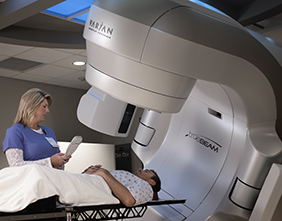Understanding Diabetes
posted on: 9/24/2018 2:09:05 PM
Health & Fitness Guest Columnist
Emily Blackmore, CNP
Lima Memorial Physicians | Lima Memorial Diabetic Center
According to the Centers for Disease Control and Prevention, more than 30 million people in the United States have diabetes. Even more alarming, one in four people do not know they have it. Diabetes is a growing epidemic and a public health concern around the world. As the seventh leading cause of death in the United States, diabetes not only increases the risk for cardiovascular disease and other comorbidities, it also creates a financial burden on individuals and our healthcare industry. This is why it is important to provide education regarding the impact and significance of this disease to everyone.
Diabetes is a disease that occurs when blood glucose levels are too high. Blood glucose, or blood sugar, is a main energy source and comes from many of the foods and drinks we consume. When blood glucose levels rise after eating, our pancreas secretes insulin. Insulin is a hormone that helps to transport blood glucose to the cells in our body to be used for energy. Unfortunately, with diabetes, the pancreas either does not make enough, or any, insulin or the body does not use the insulin effectively. There are many types of diabetes, but the three most common are Type I, Type II and gestational diabetes.
Type I diabetes occurs when insulin producing cells in the pancreas are destroyed. This is caused by an autoimmune reaction and, as of right now, we do not know how, or if, this process can be prevented. It is typically diagnosed in people under the age of 30, but can occur at any age. Patients suffering from Type I diabetes rely on prescription insulin to survive. In contrast, Type II diabetes occurs when the cells in the body do not respond to or effectively use the insulin, which is still being produced to some extent by the pancreas. This is called insulin resistance. People who are overweight or obese, older than 45 years, have a family history of diabetes or are physically inactive are at an increased risk for developing Type II diabetes. Therefore, this is a disease that we can try and prevent, delay or slow progression of with lifestyle modifications.

Gestational diabetes occurs during pregnancy and is usually diagnosed in the 24thto 28thweek. Women who have gestational diabetes may not have had diabetes prior to their pregnancy and might not continue to have diabetes after giving birth. However, gestational diabetes does increase a women’s risk for developing Type II diabetes later in life. It also poses an increased risk for complications during pregnancy and, without optimal blood sugar control, can be detrimental to the fetus. These women should be closely monitored by their OB-GYN and / or an endocrinologist. Common symptoms of high blood sugar are: excessive thirst, frequent urination, vision changes, numbness or tingling in your toes or fingers, extreme fatigue, unintentional weight loss or slow healing cuts / sores. If you develop any of these symptoms, it is recommended you discuss these with your primary care provider.
Simple tests or blood work can be ordered to help determine if you have diabetes. Over time, uncontrolled blood glucose levels increase the risk for other health concerns, such as heart disease, stroke, dental disease and kidney, retinal and nerve damage. Optimally controlling diabetes helps to significantly reduce the risk of these complications, decrease hospital admissions and improve quality of life.
Diabetes is a disease that, if left uncontrolled, can be complex, frustrating and scary. However, if controlled through proper education, personalized treatments, hard work and motivation, diabetes can be manageable and empowering. At the Lima Memorial Diabetes Center, we provide comprehensive education and individualized care to our patients. We use research-based clinical guidelines as the foundation of our practice in order to achieve positive outcomes. Our goal is to improve quality of life, reduce risk for complications and keep treatment plans affordable.
Originally published in The Lima News Health and Fitness section.
Website





